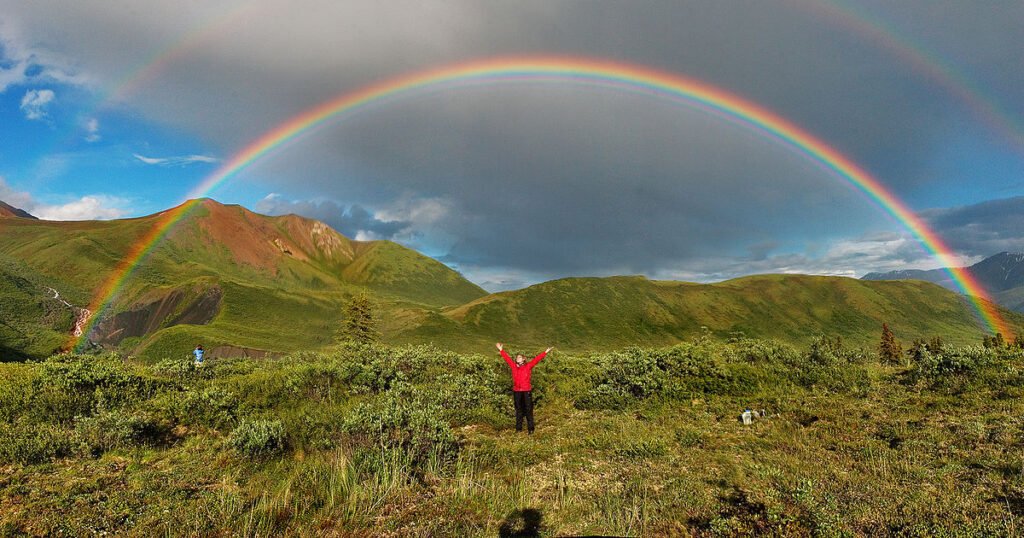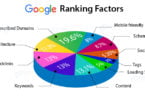Colours are an important wonder of life that we often take for granted. Without colour the world would be very dull place. If you’ve ever tried to watch a black and white movie then you’ll know exactly what we mean.
In a world of adverts and branding, colour can help you stand out from the rest of the competition. Not only do colours affect the way we think and feel but can also be an important decision maker for many potential customer. A poor colour choice can negatively change the impact of your message and put customers off. Even if you have an amazing call to action button, use the wrong colours and it will simply be ignored.
So how do colours affect us? Can they go as far to influence our decisions and purchases?
After reading this post you’ll understand the basics of colour theory and the psychology that goes with it. Ready to become an expert? Let’s begin!
All the Colours of the Rainbow

The theory of colour is a complex topic that spans many different subtopics. To keep it simple we’ll explore the basics of it here to make sure you have a good understanding.
Understanding colour theory is vital if you want to learn how colours can help influences people’s decisions and thoughts. We’ll look at how the most basic colours are made and then explore how we can tweak these basic colours to make a whole palette of new ones.
Primary Colours
Primary colours are the main essential colours that when combined with another primary colour make all the other colours. The primary colours are red, blue and yellow and can be used to make all of the secondary colours.
You might be thinking wait a second I thought the primary colours are red, green and blue or a different combination. Well you aren’t wrong. If you’re talking about colour theory regarding light or printing then the primary colours would be cyan, magenta and yellow.
In addition to this there are also different primary colours when using screens and monitors. If you’ve ever used any graphics software on the computer then you might notice the pallet is RGB for red, green and blue. Here’s an overview of the main primary colour combinations:
- Light (Red, Green, Blue)
- Printing (Red, Lime Green, Blue)
- Painting (Red, Blue, Yellow)
Although there can be different primary colours, to keep it simple we’ll stick with red, blue and yellow.
Secondary Colours
A secondary colour is made by mixing two primary colours together. In this case the secondary colours are purple, green and orange. These secondary colours give you a larger range of colours to work with and form the foundation of the more “exotic colours”.
- Red + Blue = Purple
- Blue + Yellow = Green
- Red + Yellow = Orange
Tertiary Colours
If secondary colours take the primary colours and combine them, then tertiary colours take secondary colours one step further. Tertiary colours are similar to secondary colours but can’t be classed as true secondary colours due to the way they are made. By adding slightly more of a primary colour to the mix we can make 2 name colours such as:
- Red-purple
- Red-orange
- Yellow-green
So now we’ve got our basic colours covered we’re left with a basic colour set. So how do we make different variations of the basic colours? Let’s find out.
Pure Colours
Primary, secondary and tertiary colours can all be defined as pure colours. These pure colours are bright untainted colours in their purest form. You will most often find these colours on items such as children’s toys and summer clothes.
Tints
When white is added to one of these pure colours you get a much lighter and paler colour than before. These new colours with white combined can be referred to as tints. These lighter colours can be used in a more relaxing way than pure colours as they are not as intense.
Shades
If adding white to a pure colour makes it a tint then adding black to a pure colour makes it a shade. These shades are a lot darker and dull the colour leaving a much muddier colour.
Tones
When black and white are mixed together they make grey, a mixture between a light and dark colours. When grey is added to a pure colour it creates a tone. Tones are great when you want to reduce the intensity of a certain colour by “toning it down”, a phrase you might have heard before.
The Wheel is Complete
You’ve probably been wondering why we we’re going through all the different colours and shades, but it’s all for a good reason! We’ve now completed all of the colour types to build the colour wheel. The colour wheel has all the primary, secondary and tertiary colours as well as their tints, shades and tones. If we fit them all together it looks a little something like this.
If you look on the left of the wheel this is where all the cool colours are such as the blues and greens. Whereas the warm colours are all on the right hand side such as the reds and yellow. Now we understand the basics of colour theory we can start to explore the use of colours in marketing and advertising.
How Do People View Colours Psychologically?
Unless you’re colour blind most people will view colours the same. Red is red and black is black. But there’s another depth to how people view colours. Colours can trigger memories reminding people of past experiences and even intercepting our thoughts. But which colours trigger which feelings for us?
Black
Black is the darkest of colours and often has qualities of credibility, strength, power and accuracy. The colour black is best used for construction, corporate, financial, mining, oil and tradesmen. You’ll notice that these are all professional businesses. Black works best with businesses as previously mentioned it comes across as being credible, powerful and professional which is exactly how you want customers to view your business.
Green
Green is a much lighter colour and can show characteristics of nature, youth, health, organic and instructional. The colour green is best used for any type of health, science, medicine or government industry. All of these industries want to show that they are health related or provide growth and green is the perfect colour to convey this message.
Blue
Blue is an intense colour when in its purest form. But blue is also a cool colour as previously mentioned with the colour wheel. This coolness conveys a relaxing feeling to the viewer which makes them feel at ease. Blue is best used for legal, dental, IT and healthcare as it shows calmness, focus and cleanliness. Just what you want if you’re an IT company for example.
Colour Associations
Following on from our examples of colours and how they affect people’s thoughts, there’s an interesting survey by Joel Hallock that links colours and associations.
In this simple survey 297 people were asked to choose the colour they associated the most with a particular word. We’ve highlighted the results from the survey showing the top 3 colours for each word. If you want to look at more detailed results for the survey then be sure to read the full article.
- Trust – Blue (34%), White (21%), Green (11%)
- Security – Blue (25%), Black (16%), Green (12%)
- Speed – Red (76%), Yellow (7%), Black / Orange / White (4%)
- Cheapness – Orange (26%), Yellow (22%), Brown (13%)
- High Quality – Black (43%), Blue (20%), White / Grey (23%)
- High Tech – Black (26%), Blue (20%), Grey (9%)
- Reliability – Blue (43%), Black (24%), White (8%)
- Courage – Purple (29%), Red (28%), Blue (22%)
- Fear – Red (41%), Black (38%), Grey (5%)
- Fun – Orange (28%), Yellow (26%), Purple (17%)
So what can we learn from these results? As you can see Blue was the top colour for 3 of the words (trust, security, reliability). As previously mentioned blue goes well with IT, legal and healthcare which are the exact qualities businesses require.
Black was the joint second top colour for 2 of the words (high quality and high tech). As we explored in the previous section Black is associated with professional businesses such as financial and corporate. Black comes across as being credible and powerful which is exactly the image a professional business requires.
Examples of Colour
Using these results from the survey can give you an idea of what colour scheme to choose for your website and business. Orange is clearly associated with cheapness and fun which would probably explain why the UK airline Easy jet has it as its colour scheme. Another example of a budget airline would be Ryan Air. Although they don’t use Orange in their colour scheme, they do use the second colour most associated with cheapness which is yellow. They also have blue included in their as well to show they are cheap and reliable.
Red is associated with fear and speed. From looking at the results you can see a really high 76% associate Red with speed. Although it is also associated with fear it’s a much lower percent. A good example of a company who use Red in their colour scheme is the UK company Virgin Media. This internet provider focuses on providing the fastest internet for customers all over the UK.
As you can see, a lot of companies put thought into their colour scheme and branding which means you should too! To get the right message across to your audience you really need to use the correct colours.
How to Choose the Right Colours
When choosing colours it’s important to choose the right combinations that makes things stand out. Complementary colours are also known as opposite colours as they are opposite on the colour wheel we previously covered. By being opposite on the colour wheel means the one colour they lack is the one opposite them. Let’s have a look at a few of them.
Blue is the opposite of orange and compliments it well.
Red is the opposite of green.
Yellow is the opposite of purple.
Remember the famous saying, “opposites attract” well in this case it’s definitely true! If you have a picture of different shades of green then red is obviously going to stand out. Using complimentary colours is the easiest way to make something stand out. Whether its text, a logo or a symbol picking the right colour is essential if you want it to be seen.
The Importance of Colours on Your Website
This might be all useful information but how exactly can you use it to improve your business and website? Well here’s some recommendations.
First of all let’s have a look at gender specific colours. Looking at the research from the cool company KISSMetrics there’s a lot of gender specific colours that can really affect your conversion rates.
Women love: Blue, Purple and Green while they hate Orange, Brown and Grey.
Men on the other hand love: Blue, Green and Black while they hate Brown, Orange and Purple.
If you look closely you’ll notice that both genders love Green and Blue. This is not a surprise as these are both calming and relaxing colours that release positive emotions and feelings. If you’re specifically targeting women then using Purple is a good idea as it’s an intense bright colour that has the qualities of creativity and luxury. If you’re trying to specifically sell products to women then designing your colour theme around Purple would be a good idea.
You’ll also notice that men love the colour Black, this is probably because it conveys the qualities of independence, power and sophistication. Men love to take things seriously but overusing the colour black can cause problems. Black can also be used to show evil, depression and even death as the colour lacks any light. Make sure to use it sparingly or else you’ll be triggering the wrong emotions in potential customers.
What Changes Can You Make to Your Website?
So know you how which colours people enjoy, how can you take advantage of this? Well the first suggestion would be to change the colour of your call to action button on your website and run an A/B test to see if the new colour makes a noticeable different. Let’s have a look at a detailed example.
The guys over at Hubspot did a great experiment on a call to action button using a simple A/B test. The experiment was simply changing the colour of a call to action button from Green to Red to see if it improved the conversion rate or not.
Red vs Green Colour Example
The only thing on the entire page that was changed was the colour of the button for obvious reasons. If they changed anything else on the page then it would be hard to tell which change was making the difference. To follow the rules of a fair test they just changed the colour of the button. Can you guess which colour performed the best? Red or Green? Have a think now and decide on an answer.
Have you decided on a colour? Well the results might surprise you. Tested over 2,000 unique visitors the red button outperformed the green button by 21%. Surprised or not?
Most people would think the colour green would outperform red but clearly that’s not the case. Just think how many more conversions you could be getting on your website just from a simple colour change. Obviously the call to action A/B test is just a starting example. You could also go on to try A/B testing your logo colours, website colours, and even hyperlink colours.
So now you know everything about colours and how people associate them to different words and feelings it’s time to give your website a review. Have a look at the colours you are using on your logo and website and ask yourself do these represent my business? Just by questioning the use of colours on your website could lead to some simple changes that could improve your conversion rate. The use of colour is a powerful tool which can have great impacts on your business if used correctly and terrible consequences if used incorrectly.







Leave a Comment
You must be logged in to post a comment.